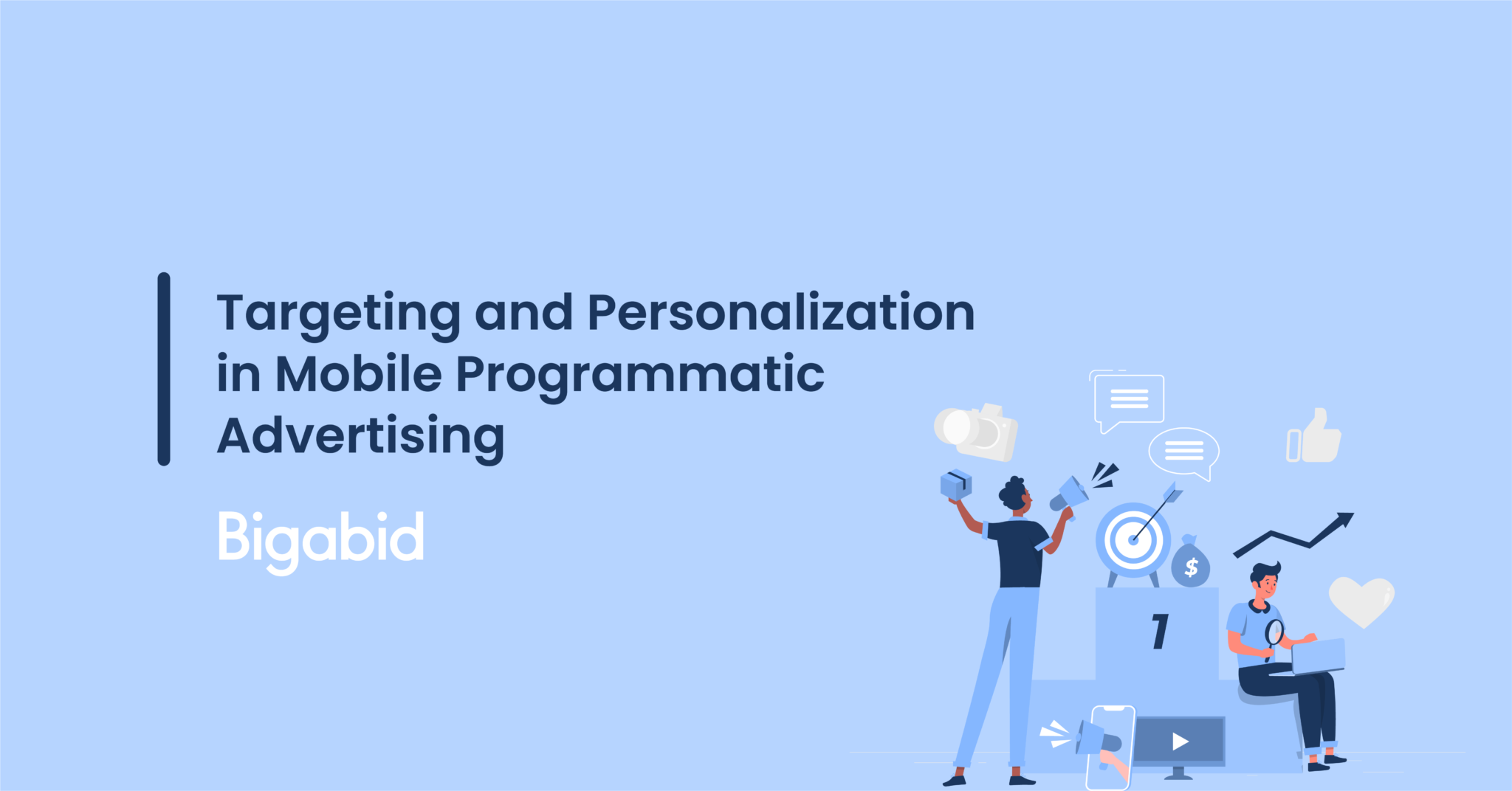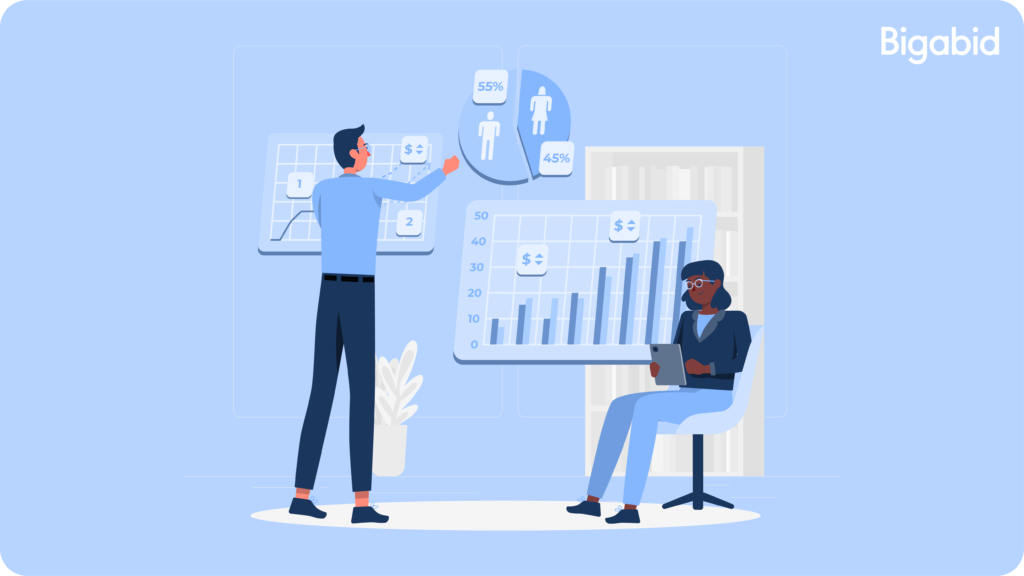
Mobile programmatic advertising has transformed the way mobile app marketers connect with audiences. With billions of app downloads and installations occurring every year, reaching the right audience at the right time has become more critical—and challenging—than ever before. This is where targeting and personalization, powered by advanced technologies such as AI, machine learning, and deep neural networks, play a vital role.
For mobile app developers, marketers, and advertisers, understanding the dynamics of targeting and personalization in mobile programmatic advertising can significantly enhance campaigns by improving user acquisition and driving higher lifetime value (LTV). This blog explores the strategies, technologies, and platforms shaping the future of mobile advertising.

Programmatic advertising automates the buying and placement of ads in real-time through Demand-Side Platforms (DSPs). These platforms enable advertisers to bid for ad inventory in milliseconds, ensuring ads are displayed to the most relevant audience. Unlike traditional, manual ad placement methods, programmatic advertising ensures precision, efficiency, and scalability.
Targeting in mobile programmatic advertising focuses on serving ads to users who are most likely to engage or convert. Whether you’re introducing a fitness app or a mobile game, targeting ensures your ad dollars are spent wisely by reaching users who align with your desired audience profile.
Key dimensions of targeting include:
Effective targeting increases user acquisition while keeping your cost-per-install (CPI) and cost-per-click (CPC) metrics low.
Personalization takes targeting a step further. While targeting defines who sees your ad, personalization ensures that what they see feels relevant and meaningful. Dynamic creative optimization (DCO)—an AI-driven approach—powers personalized ads by tailoring visuals, messaging, and CTAs (call-to-actions) based on individual users’ preferences and behaviors.
For example, a music streaming app aiming to acquire more users might serve tailored ads highlighting “curated playlists for pop fans” vs. “hip-hop playlists for your workout.” Personalization transforms generic campaigns into highly engaging ones that resonate with unique user needs.
Read more about Creative Personalization.

To master targeting and personalization in mobile programmatic advertising, consider these key strategies:
Retargeting re-engages users who have interacted with your app or ad but haven’t converted. Tracking a user’s journey (e.g., adding an item to the cart but not completing the purchase) allows advertisers to serve contextual ads that encourage follow-through.
Demand-Side Platforms (DSPs) with retargeting capabilities, such as AppLovin, Google Ads, or Bigabid, use real-time behavioral data and predictive algorithms to ensure your retargeting campaigns stay impactful.
For example:
Retargeting isn’t just for sales—it can be used for reactivating dormant users and increasing overall app engagement.
AI-powered predictive targeting has become a game-changer. Using machine learning and deep neural networks, platforms can identify users likely to engage with your app before they take any actions. By analyzing historical data and user patterns, AI makes your advertising predictive rather than reactive.
For example:
Predictive targeting improves efficiency by helping marketers focus resources on audiences that are most likely to deliver results.
Learn about the Evolution of AI in Mobile Advertising.
Geotargeting ensures that ads are served in specific locations, making it highly effective for businesses prioritizing regional engagement. Mobile apps with physical locations (e.g., ride-hailing apps, food delivery apps) or time-sensitive offerings use geotargeting to reach their audience at just the right place and time.
For example:
Geotargeting adds hyper-relevance, ensuring that campaigns resonate contextually with the user’s environment.
Deep neural networks (DNNs) are among the most advanced technologies enabling personalization at scale. These mathematical models mimic human thinking patterns to process and analyze vast data sets. By identifying patterns and nuances in user behavior, DNNs ensure ads are hyper-personalized.
For example:
Discover more about Deep Neural Networks in Mobile Advertising.
Dynamic Creative Optimization is a tool that automates ad personalization by altering creatives in real time. By tailoring images, banners, and copy dynamically, brands can ensure every ad aligns with their audience’s profile.
From testing alternate CTAs to adjusting visuals, DCO ensures campaigns are personalized without requiring manual creative adjustments.
For example, instead of one static ad stating, “Try our ride-sharing app,” users might see:

The success of targeting and personalization hinges on metrics. To gauge the effectiveness of your campaigns, track these key performance indicators (KPIs):
Machine learning models can even connect various metrics to predict LTV and churn rates in advance, helping advertisers fine-tune campaigns.
DSPs are the backbone of mobile programmatic advertising, offering an end-to-end solution for campaign management. Platforms such as AppLovin, Bigabid, and Google

DSPs are the backbone of mobile programmatic advertising, offering an end-to-end solution for campaign management. Platforms such as AppLovin, Bigabid, and Google Ads leverage AI and machine learning to streamline both targeting and personalization.
Features of DSPs include:
DSPs are vital for advertisers ready to execute large-scale personalized campaigns efficiently.
The future of mobile programmatic advertising lies in the continued evolution of targeting and personalization technologies. From advancements in AI and machine learning to the increasing use of deep neural networks, opportunities to craft meaningful connections with users are expanding.
For mobile app developers, marketers, and advertisers, investing in cutting-edge targeting strategies now can lead to not only increased conversions but also higher customer satisfaction over time.
By leveraging AI to predict user behavior, employing DSPs to execute campaigns seamlessly, and incorporating personalization into every interaction, your team can achieve advertising that doesn’t just drive downloads but forms lasting relationships with users.
Reach out to Bigabid and explore these tools and technologies today. The right approach to targeting and personalization can transform your mobile advertising efforts into a finely tuned, high-performing engine for growth.